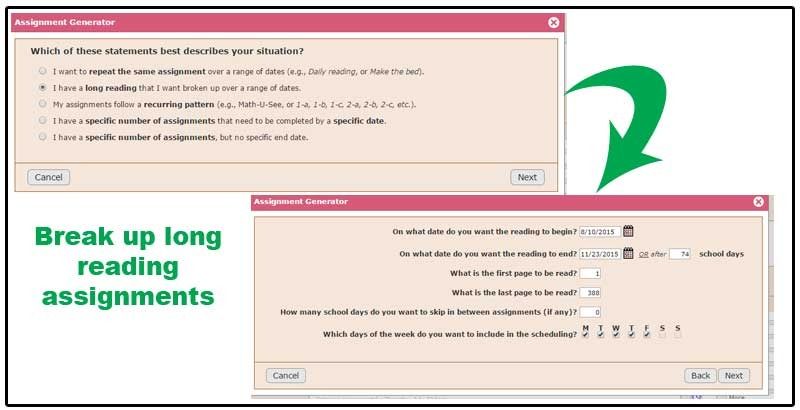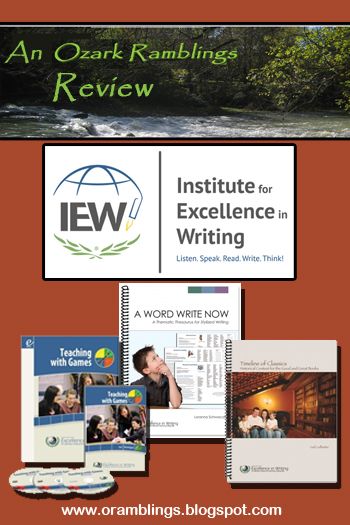
After years and years of reviewing homeschooling curriculum and products, I can only count on one hand the number of vendors from whom I’d accept any product, just know it’s going to be good. The Institute for Excellence in Writing is one of those vendors. Every time we’ve reviewed a product, it has become a permanent part of our schooling. I’ve been using their Structure and Style writing program since my son was in first grade. A few years later came the Literature Analysis course and most recently was their Grammar program. This time, the products we received aren’t curriculum themselves, but resources to enhance or supplement homeschool studies—and not just in the area of language arts..
We received a spiral bound book for all three titles. The Teaching with Games set also included two DVD’s and a CD-ROM.
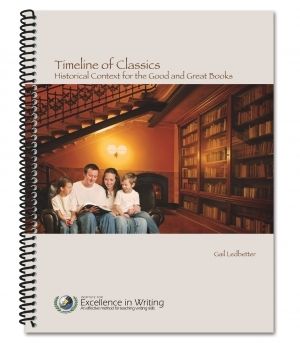
There are over ninety pages of charts in Timeline of Classics, each giving the Description or Time Period, the Title, the Author, and the appropriate age level of the resources. I use the word “resources” because you will find much more than books listed. I’ve also come across audios, movies, magazines, television shows, etc. A lot of listings have “Compact Classics” listed with the title—a little research determined this book provides two page summaries of many “classic” books.
I would say this book provides a jumping off place if you’d like to add books or movies to your study of a period of history. There is no synopsis of any title so you’d still need to do some research to see if the title is going to meet your needs. For example, since we were in the middle of studying ancient Egypt, I went to that section. There I found listings for Motel of the Mysteries (which I happen to know is a spoof of Howard Carter’s discovery of King Tut’s tomb) and the Cecil B DeMille version of The Ten Commandments. I wouldn’t consider either resource for a serious study of ancient Egypt, but the might make for some family fun time to celebrate wrapping up our study. Often you’ll find a title in more than one format, for example most of the G.A. Henty books list the original book and the audio versions available.
Of the three books I received, this is the on I use the least. If a book is worthy of being called a classic, then we will read the original (even if I have to read it aloud). I’m not interested in two-page summaries or film adaptations. I will keep the book with my other reading list resources because it does have a very thorough chronological list.
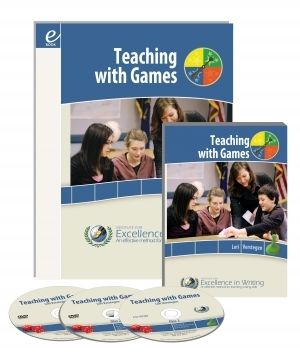
This year I’m help to teach a high school level biology co-op class. We’re alternating labs with review sessions to prepare for tests. What better tool for making reviews fun than the Teaching with Games Set. The book gives instructions and often samples of games that require No Prep, versions of Flash Cards, asking Questions, drilling math facts, and games the students build themselves throughout the study.
I happen to learn best by having someone teach me as we actually play the game rather than reading the rules. If you’re like me then you’ll want to get the DVD which shows a round of each game being played. The CD-ROM has a PDF version of the book (so you can print your own copies of the sample games) and some bonus grammar games.
For our science co-op I’ve found the Hot Potato card game to be a great way to go through vocabulary terms. Both the clue giver and the one shouting out the answer have to know the definition of the term so they can pass on the stack of cards before time runs out. Other times we’d play a simplified version of Jeopardy or a game called The Question Bag when we needed to review information that required more than a one word answer.
The introduction in both the DVD and the book share how students are more likely to be motivated to learn when it’s done through a game. I totally agree and can share my own story. My son is the youngest student in science co-op—he’s only 12 but is taking this high school level course because he’s mathematically ready for it. He has, however, won 4 out of 5 of the study games we’ve played thus far because he’s very, very motivated to win (winners get $5 gift cards to local stores and restaurants)—even if that means spending a lot of time with his nose in a science book.
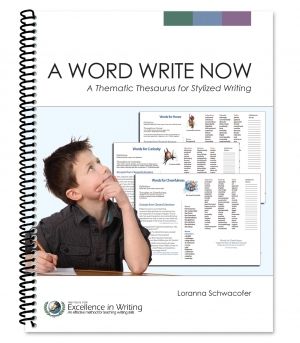







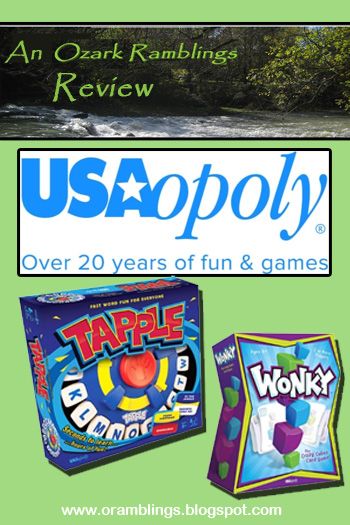 Every time the UPS man drops off a review product I feel like it’s Christmas morning. That’s not always the case for my son, but this time he agreed with me because our box from
Every time the UPS man drops off a review product I feel like it’s Christmas morning. That’s not always the case for my son, but this time he agreed with me because our box from 
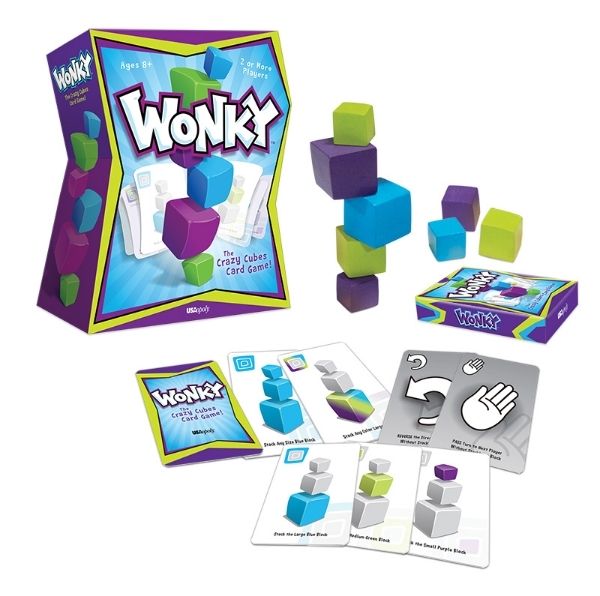 I’ll be honest and say I wasn’t sure how my son would take to
I’ll be honest and say I wasn’t sure how my son would take to 




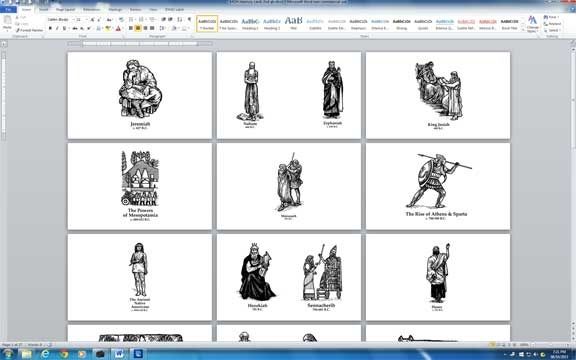
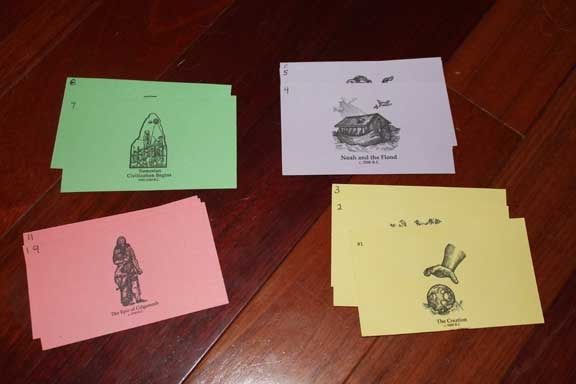
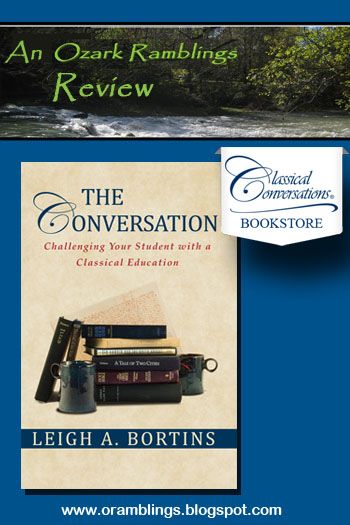 We’ve now reached the halfway point in our homeschool journey (actually past half way if you consider kindergarten). I hesitate to use the term “over the hump” because that implies an easy downhill slide to the end and with middle school and high school still ahead I think we’d all agree we’re not going to be coasting to graduation. In fact several of my friends are too intimidated to continue teaching their kids at home. That’s why I was thrilled with the opportunity to read
We’ve now reached the halfway point in our homeschool journey (actually past half way if you consider kindergarten). I hesitate to use the term “over the hump” because that implies an easy downhill slide to the end and with middle school and high school still ahead I think we’d all agree we’re not going to be coasting to graduation. In fact several of my friends are too intimidated to continue teaching their kids at home. That’s why I was thrilled with the opportunity to read 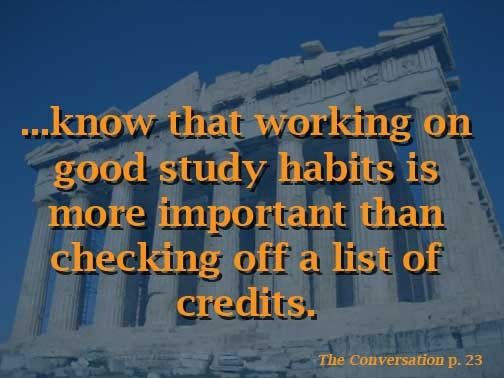
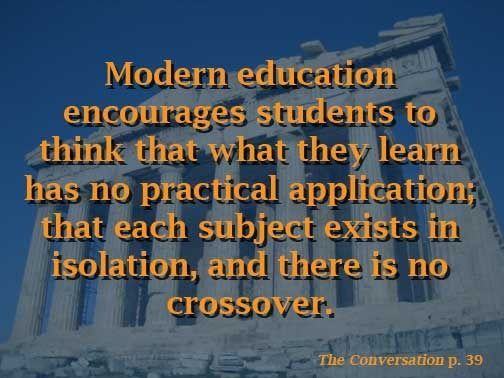
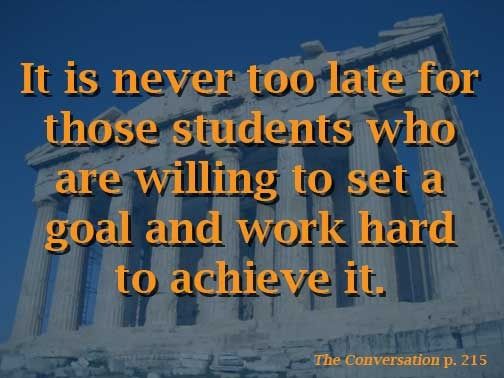
 Family reunion……road trip…..over fourteen hours in the car in two days, and that’s if we were lucky. Last year we got stuck in road construction traffic and spent an hour to cover six miles. What was one of the first things I made sure I packed in my car bag?
Family reunion……road trip…..over fourteen hours in the car in two days, and that’s if we were lucky. Last year we got stuck in road construction traffic and spent an hour to cover six miles. What was one of the first things I made sure I packed in my car bag?

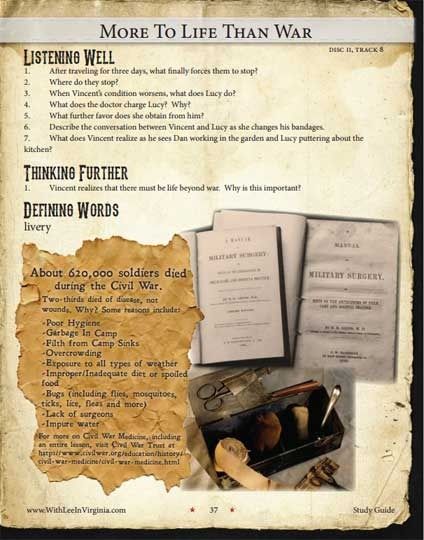 We have been listening to WLiV simply for pleasure since our study of the Civil War concluded the first quarter of last year. Had the timing been right, we could have used Heirloom’s free Study Guide to make this more of a unit study. Each track from the CD has its own page of words to define—some military/war terms and some things we just don’t see any more, like a livery. The Listening Well questions test memory and comprehension. The Thinking Further questions deal with critical thinking, looking at actions/situations from a Biblical standpoint, and other historical/geographical research. The background and artwork would make it “ink intensive” to print the 52 pages out, but I highly recommend you letting students at least look at the pages. There are maps, inset texts with more information, and some thought-provoking photographs of the war. Look at this image of a Bible that had been carried in the breast pocket of a young soldier. It saved his life by stopping two minie balls and I pray it also saved his soul.
We have been listening to WLiV simply for pleasure since our study of the Civil War concluded the first quarter of last year. Had the timing been right, we could have used Heirloom’s free Study Guide to make this more of a unit study. Each track from the CD has its own page of words to define—some military/war terms and some things we just don’t see any more, like a livery. The Listening Well questions test memory and comprehension. The Thinking Further questions deal with critical thinking, looking at actions/situations from a Biblical standpoint, and other historical/geographical research. The background and artwork would make it “ink intensive” to print the 52 pages out, but I highly recommend you letting students at least look at the pages. There are maps, inset texts with more information, and some thought-provoking photographs of the war. Look at this image of a Bible that had been carried in the breast pocket of a young soldier. It saved his life by stopping two minie balls and I pray it also saved his soul. 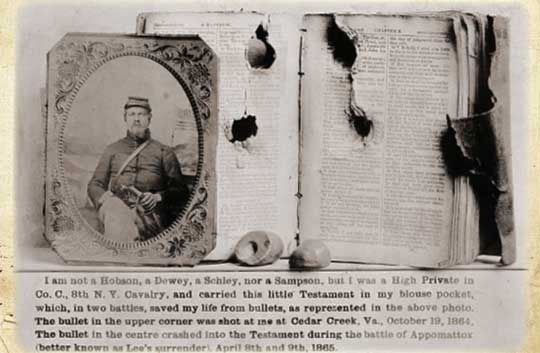
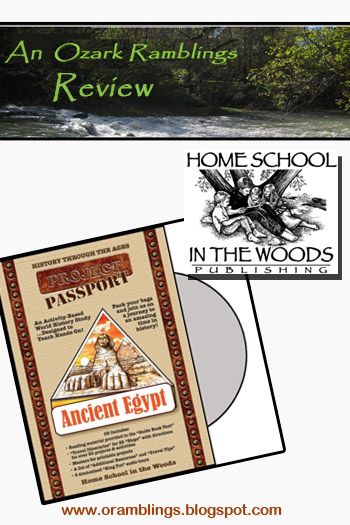 Summertime often means vacation time and we’re just finishing ours. You know the drill—itineraries, tour guides, postcards, photo albums, souvenirs, exotic foods. Did I mention our destination was Egypt? Did I mention we traveled back in time? It’s all true thanks to
Summertime often means vacation time and we’re just finishing ours. You know the drill—itineraries, tour guides, postcards, photo albums, souvenirs, exotic foods. Did I mention our destination was Egypt? Did I mention we traveled back in time? It’s all true thanks to 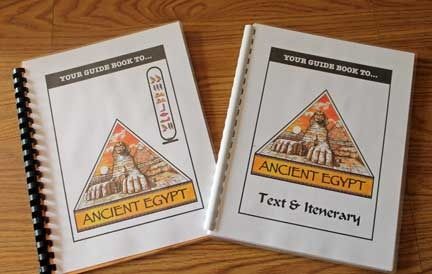 Standard drill for me is to print out the lesson texts and teacher’s instruction manual. Since this whole study is themed as a vacation tour they are referred to as the Guide Book and Travel Itinerary respectively. If you are familiar with HSitW from their Time Travelers American History series, you know that students work on craft projects (souvenirs), build a timeline (Snapshot Moments in History), write a newspaper (The Kemet Chronicle), and build a notebook (Scrapbook Sights) and lap book (I guess they couldn’t come up with another travel themed name). New additions to the world history series are Postcard Greetings from famous folks from the past, MP3 audios of tours through historic sites, and a final wrap up with the creation of a trifold travel brochure.
Standard drill for me is to print out the lesson texts and teacher’s instruction manual. Since this whole study is themed as a vacation tour they are referred to as the Guide Book and Travel Itinerary respectively. If you are familiar with HSitW from their Time Travelers American History series, you know that students work on craft projects (souvenirs), build a timeline (Snapshot Moments in History), write a newspaper (The Kemet Chronicle), and build a notebook (Scrapbook Sights) and lap book (I guess they couldn’t come up with another travel themed name). New additions to the world history series are Postcard Greetings from famous folks from the past, MP3 audios of tours through historic sites, and a final wrap up with the creation of a trifold travel brochure.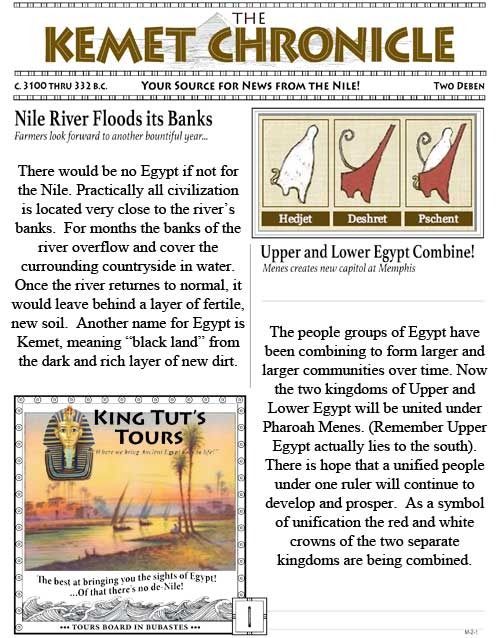
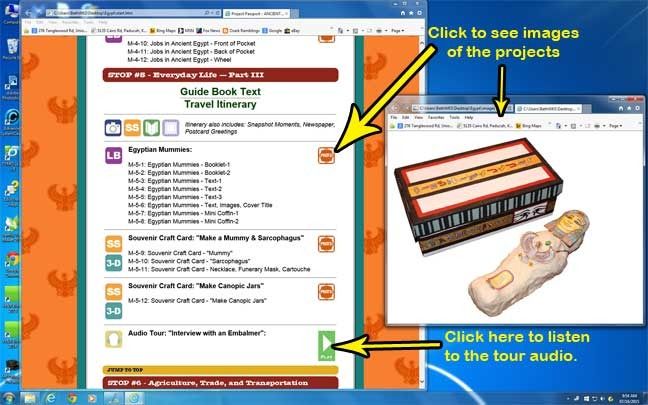

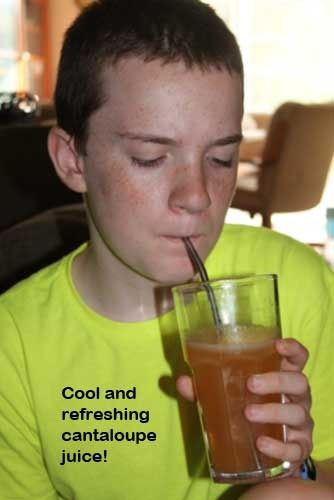
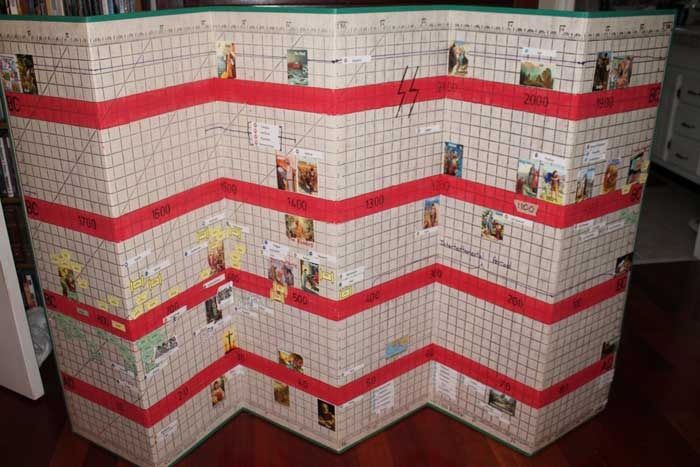

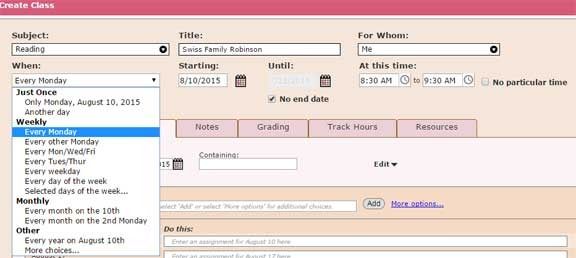 our read aloud title for the fall and I want to finish by Thanksgiving…
our read aloud title for the fall and I want to finish by Thanksgiving…